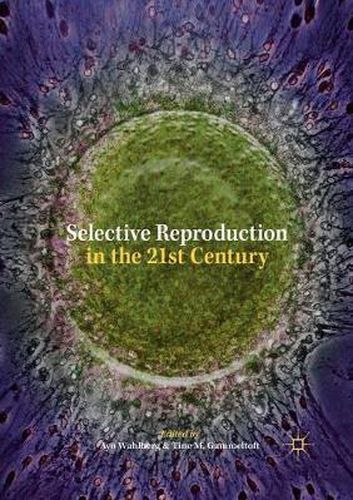Readings Newsletter
Become a Readings Member to make your shopping experience even easier.
Sign in or sign up for free!
You’re not far away from qualifying for FREE standard shipping within Australia
You’ve qualified for FREE standard shipping within Australia
The cart is loading…






This book explores how conditions for childbearing are changing in the 21st century under the impact of new biomedical technologies. Selective reproductive technologies (SRTs) - technologies that aim to prevent or promote the birth of particular kinds of children - are increasingly widespread across the globe. Wahlberg and Gammeltoft bring together a collection of essays providing unique ethnographic insights on how SRTs are made available within different cultural, socio-economic and regulatory settings and how people perceive and make use of these new possibilities as they envision and try to form their future lives. Topics covered include sex-selective abortions, termination of pregnancies following detection of fetal anomalies during prenatal screening, the development of preimplantation genetic diagnosis techniques as well as the screening of potential gamete donors by egg agencies and sperm banks. This is invaluable reading for scholars of medical anthropology, medical sociology and science and technology studies, as well as for the fields of gender studies, reproductive health and genetic disease research.
$9.00 standard shipping within Australia
FREE standard shipping within Australia for orders over $100.00
Express & International shipping calculated at checkout
This book explores how conditions for childbearing are changing in the 21st century under the impact of new biomedical technologies. Selective reproductive technologies (SRTs) - technologies that aim to prevent or promote the birth of particular kinds of children - are increasingly widespread across the globe. Wahlberg and Gammeltoft bring together a collection of essays providing unique ethnographic insights on how SRTs are made available within different cultural, socio-economic and regulatory settings and how people perceive and make use of these new possibilities as they envision and try to form their future lives. Topics covered include sex-selective abortions, termination of pregnancies following detection of fetal anomalies during prenatal screening, the development of preimplantation genetic diagnosis techniques as well as the screening of potential gamete donors by egg agencies and sperm banks. This is invaluable reading for scholars of medical anthropology, medical sociology and science and technology studies, as well as for the fields of gender studies, reproductive health and genetic disease research.